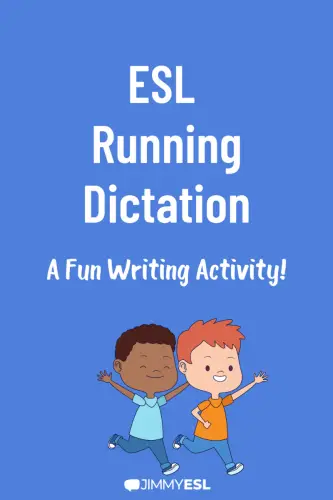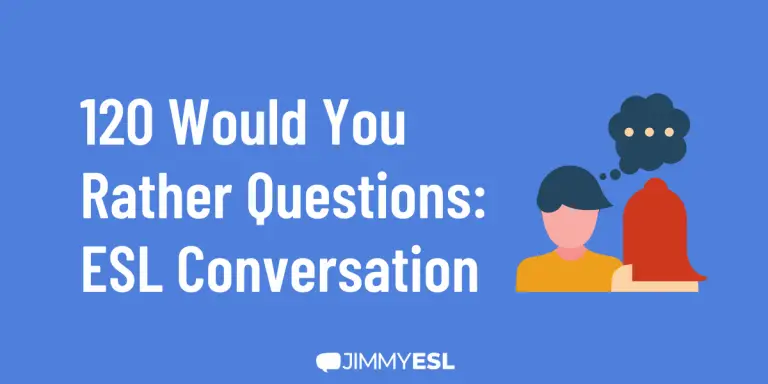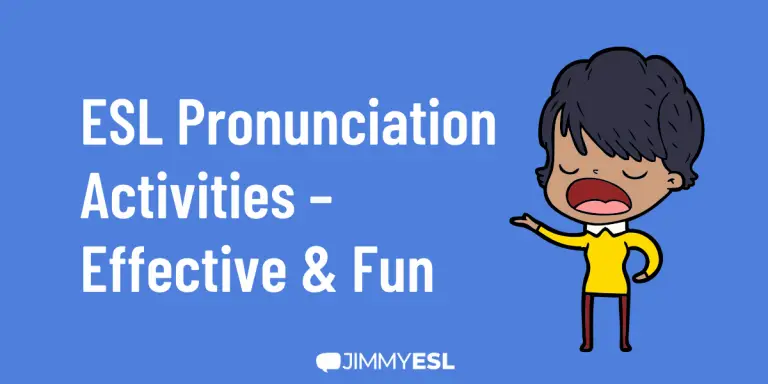ESL Running Dictation: a Fun Activity to Practice Writing
“Take out your notebooks: You will be taking dictation!”
What child likes to hear this sentence at school? … Exactly. Dictations are indeed indispensable for learning spelling. But they are unpopular.
There are less boring variants, such as the running dictation – and another variant, the sneaking dictation.
What exactly is meant by these exercises, why are they so great, and how do you implement them for your ESL classroom? In this article, I’ll explain everything in detail.

What is Running Dictation?
In normal dictation, the teacher reads out individual words or an entire text sentence by sentence; the students have to write everything down, making as few mistakes as possible.
In running dictation, the text is printed out and hung up or placed somewhere in the classroom. The children must now go one at a time to the sheet, memorize a passage of text, and then write it down at their place.
Each student may go to the text sheet as many times as they like until they have finished writing the entire text and possibly even correcting it themselves.
“Go” can mean walk or run – the teacher can set any minimum or maximum speed for movement. You could even post the text at the other end of the hall or in the yard and have the students run there and back each time. This would then be “race dictation.”
You could even make a competition out of it: Whoever makes the fewest mistakes and finishes the fastest wins.
You can use this dictation for ESL lessons as well as for any language lessons.
The running dictation is more appropriate for teens; younger children probably have a hard time concentrating on writing between racing phases. The sneaking dictation might be the better option then.
What is Sneaking Dictation?
A sneaking dictation is the same as a running dictation in terms of the procedure – only with a limited moving pace.
The rule for everyone is that it must be quiet in the classroom. No one is allowed to make loud noises; neither while sneaking nor by talking to the others.
Benefits of Running Dictation
Creeping dictation has several advantages over the regular version:
Independent work
Since all children can read the correct text, they can correct mistakes themselves. Thus, they learn to work independently and conscientiously – and the teacher has “time off”.
Incorporates physical activity
The children do not have to sit still for long. This accommodates children with a great urge to move.
More fun
Running dictation doesn’t feel like dictation, but almost like a sports exercise.
Likewise, some children may be less afraid of it than of regular dictation: they can read difficult passages several times and compare them with their text; each child can go at his or her own pace.
Focus (Sneaking dictation)
Especially the sneaking dictation helps to train students staying focused. Being quiet and working in peace is part of the game, and not a forced rule of behavior.
Also check out our free ESL writing worksheets.
How to Conduct a Running or Sneaking Dictation
Want to try it out with your students? Here’s how it works.
(Except for the moving speed, you perform both types of dictation the same way.)
Prepare and attach the texts
Create the sheets with the words, sentences, or whole texts to be written. Print them out or write them on small cards.
Tip: Laminate the sheets or cards, then you can use them again and again, save paper and protect the environment.
Now hang up the texts in the classroom or in another place. Or lay them down. Important: Put the texts somewhere so no one can read them from their seats; otherwise these children would have an advantage over the others.
If you put the texts outside the classroom, make sure that your students do not disturb the other classes. It is best to consult with your colleagues.
Each text can probably be seen by a maximum of three to four people at a time, so you will likely need to hang each text several times, in different places around the room. Otherwise, there could be a scramble in front of the sheets and concentration would be lost.
You can either copy the entire text several times, or divide the text passages onto individual sheets or small cards. In the latter case, the children would have to go to different stations depending on what they are writing.
The children read through the text
Now allow each child to read through the text or all the words at their own time and get an overview.
You may need to divide this class into several groups and have them come to the sheets one at a time. It is important that during this time no one starts writing yet and gets a head start.
The children write … and go … and write.
Now all the students start writing. If the dictation consists of individual words or passages (and not a coherent text), they can decide for themselves in which order they want to write the passages.
As needed, each child now walks (sneaks, runs) independently to the sheets and back to the square and finishes writing the entire dictation.
If you intend to make it a little more difficult, you can limit the time or the number of passages allowed.
The children hand in the dictation
When a student has completely copied the text, they should check it again independently; to do this, they can go back to the text sheets and compare the spellings.
Thereafter, everyone hands in the dictation, as usual.
Browse our full archive of ESL activity ideas and materials.







Running dictation is a dynamic activity where students memorize and write down passages of text posted around the classroom. It promotes independent work, incorporates physical activity, and makes the learning process more enjoyable. Sneaking dictation is a similar activity but with a slower pace. Both variations help students improve focus and concentration. To conduct a running or sneaking dictation, prepare and attach the texts, ensure they are not visible from students’ seats, allow students to read the texts, and then have them write the passages by visiting the text sheets. Finally, students can check their work and hand in the dictation.